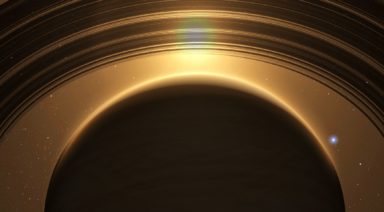Did Nikola Tesla Leave Us a Key to Free Energy?

We have many reasons to thank Nikola Tesla when it comes to modern technology, but had capitalistic greed not stood in his way, Tesla’s contributions to society could have gone significantly further. Despite his mental breakdowns later in life, likely caused by detractors and capitalists who refuted his utopian visions for society, Tesla created a plethora of inventions, with the goal of transmitting energy to the world at little to no cost.
While Tesla is known for his advancements in AC power, radio transmission, and induction motors, there is one vision of his that hasn’t fully come to fruition, and that is the wireless transfer of energy en masse. While the Tesla coil is commonly recognized and found at most science museums, the basis of the technology behind it is still in its nascency for practical use.
Over the past decade, wireless technology has become a feasible technological product, but its scale has yet to reach the level at which Tesla originally envisioned. While some companies used the concept to create wireless charging devices for cell phones and small electronic devices, Tesla’s original intent was to provide a wireless network of power for anyone in the world to tap into.
The Wardenclyffe Tower
Tesla initially created his Tesla Coil in Colorado Springs on Pike’s Peak to experiment and test his idea of creating a wireless power grid for the world. There he was given free power from the local utility, as well as funding for his lab. Tesla tested his theory at his Pike’s Peak lab, creating electrical arcs that were essentially man-made lightning, seen for miles. Tesla proved that with this invention he could wirelessly power lightbulbs.

This attracted the attention of J.P. Morgan who offered financing for Tesla’s tour de force, the Wardenclyffe tower in New York, a massive magnifying transmitter also known as a high power harmonic oscillator. The Wardenclyffe tower was built to be 187 feet tall and anchored 300 feet into the ground. When Marconi beat Tesla at wireless radio transmission across the Atlantic, Tesla changed his plan for the Wardenclyffe tower to transmit free energy to all the world.
The energy was created by traditional means and cost money to generate, but Tesla’s tower intended to make it possible to transmit the power for free by creating a channel between the Earth and the ionosphere for anyone to tap into.
Aside from needing more money to accomplish this, J.P. Morgan was threatened at the prospect of free energy. After all, he was a titan of his industry in copper, a major conductor of electricity, as well as a capitalist whose work centered around profiting from others.
Russian Research
While it apparently hasn’t been active since the Soviet era, there is a massive Tesla Tower in Russia that is still functional. Not much is known about the compound, called the High Voltage Marx and Tesla Generators Research Facility, in the middle of a forest 40 miles outside of Moscow.
The facility can supposedly generate enough electricity to power the entire country, for a period of… a millionth of a second. The operation costs of the tower are also said to be very high. While the practicality of the facility might be part of the reason why it is inoperable, it is intriguing nonetheless. What else could potentially be gleaned from this facility if it were given funding to operate again?

Several years ago, two Russian scientists, who also happened to be brothers, started a crowdfunding campaign to build a massive magnifying transmitter with modern materials to finish what Tesla started and provide energy to the world. The construction costs for the tower were set at $800,000, however, it was never reached. The brothers claimed to have proven the feasibility of the project based on models run in computer software, as well as their belief in Tesla’s proof of concept.
Unfortunately, in addition to falling shy of their funding goal, there was another cost-related gap that was left out of the equation, funding for the generation of the energy itself. The brothers proved that an area of 100 square kilometers situated around the equator and filled with solar panels would be sufficient to meet the world’s energy demands. The cost of building solar panels to fill that area, however, is estimated at about $20 trillion.
HAARP
A less benevolent example of the modern use of the science behind Tesla’s theory of wireless energy transmission is a government project in the U.S. called HAARP.
While Tesla realized the altruistic utility of the ionosphere as a transmitter for radio waves and energy, the U.S. military is likely studying it for more sinister purposes.

So, what is being studied at HAARP run by multiple branches of the military in the middle of nowhere in Alaska? Chances seem good that it isn’t related to free, wireless energy to be dispersed globally. Conspiracies surrounding the program range from death rays to EMP shockwaves for disabling weapons and radar systems, to weather control. And these fears aren’t solely held by American and Canadian citizens, the European Union also called for more transparency with HAARP and the experiments conducted there.
It’s evident that Tesla’s unfulfilled vision of wireless energy transmission has not been completely buried, and could still come to fruition in some form or another. Will the government figure out how to use it for destructive purposes, or will an innovator use it for the purpose Tesla intended it for?
The Mystery of Torsion Fields

Russian scientist Nikolai Kozyrev was considered a prodigy. In 1925, at age 17, he published his first scientific paper, which focused on astrophysics and the atmosphere of the sun and other stars. It was met with great acclaim by other scientists.
At age 20, he graduated from the University of Leningrad with degrees in physics and mathematics. By age 28, he was a college professor and distinguished astronomer. To the science community at large, this promising young physicist disappeared for the next 11 years.
Nikolai Kozyrev: Russian Concentration Camps
While Korzyrev was enjoying a successful career as a professor and researcher, Josef Stalin, leader of the Soviet Union, was feeling threatened by scientists whom he perceived were independent thinkers. He was concerned they would see through his propaganda program. To prevent this, in 1936, he arrested them and sent them to concentration camps. Nikolai Kozyrev was among those imprisoned. There wasn’t much for him to do during the long 11 years he spent in the camps except to observe, meditate, and think.
During his imprisonment, Kozyrev was enthralled watching bacteria grow and noticed it grew in a perfect spiral. This led him to conclude that all life-forms likely draw off of an unseen spiraling source of energy. This energy is as important to maintenance and growth of life as are “eating, drinking, breathing, and photosynthesis.”
Kozyrev also concluded that this spiraling energy and growth is how time works, with the Earth orbiting in space by way of a “complex spiraling pattern.”
As the Earth rotates on its axis as it orbits the sun, it releases energy, or torsion waves, that propel it through space. The torsion waves travel at speeds faster than the speed of light. These torsion fields are actually “waves of time” which also cause ripples in gravity. Indeed, some scientists now believe that “electromagnetism, gravity and torsion waves are all members of the same family; they are just different forms of ether vibrations.”




































